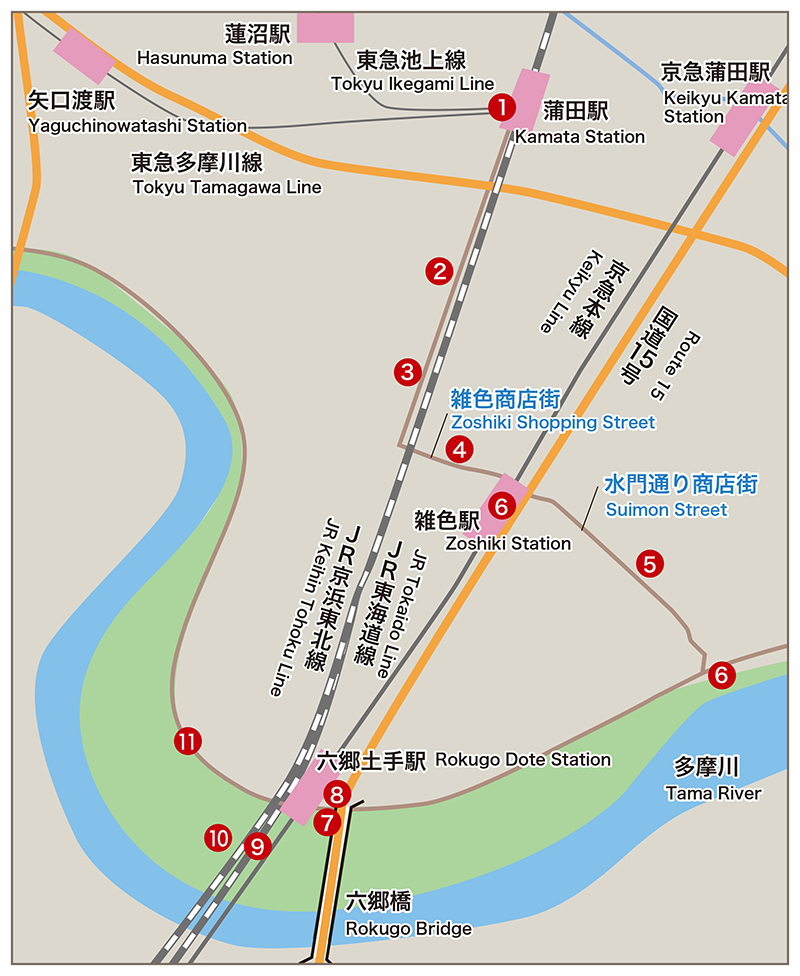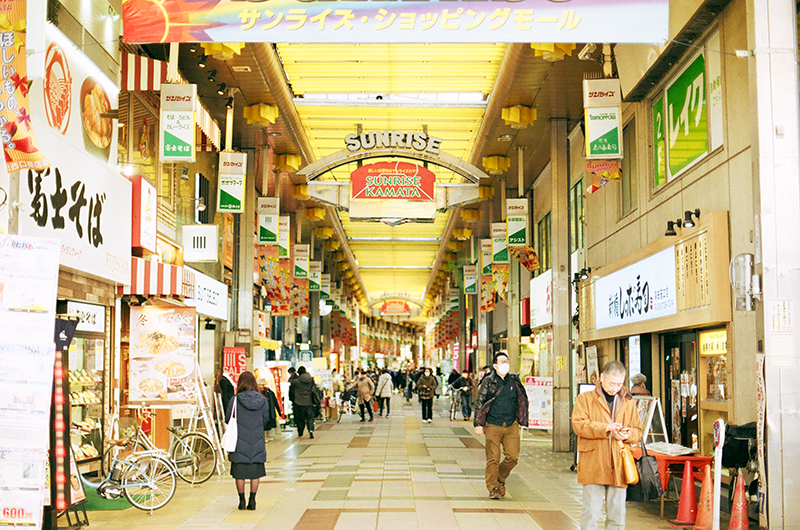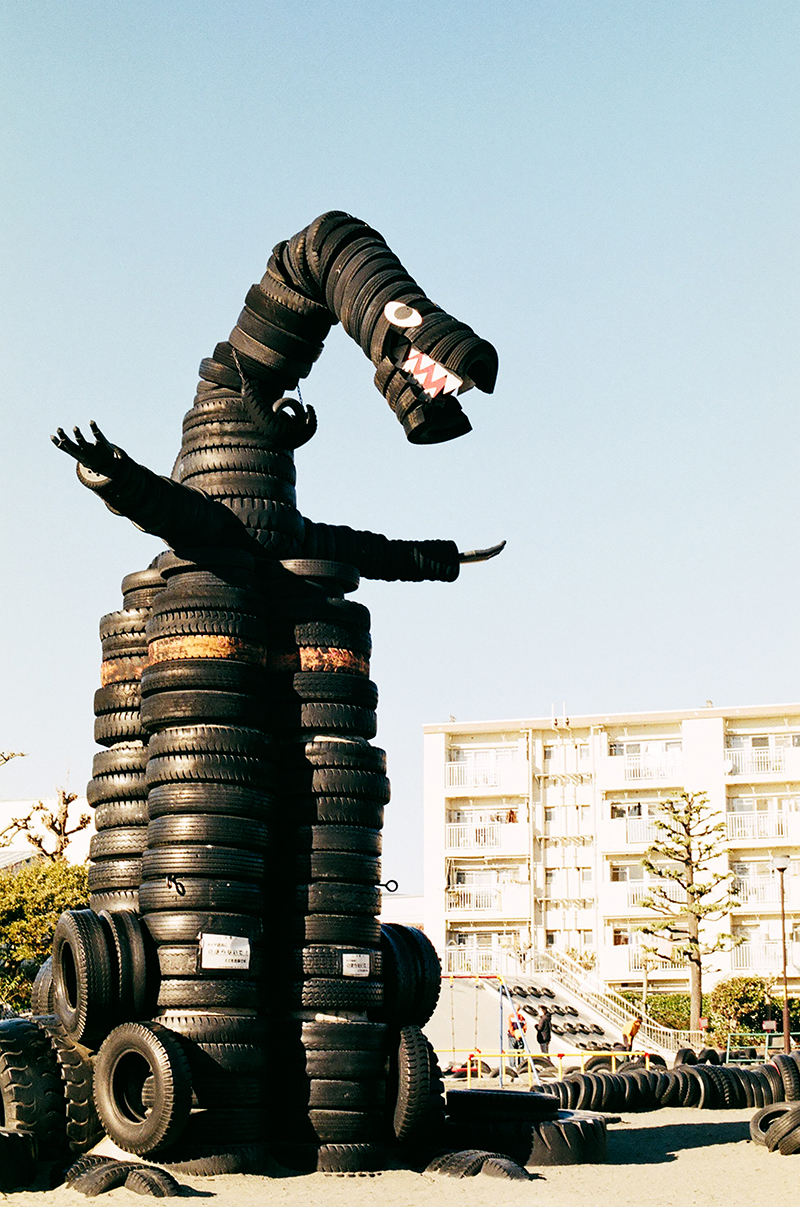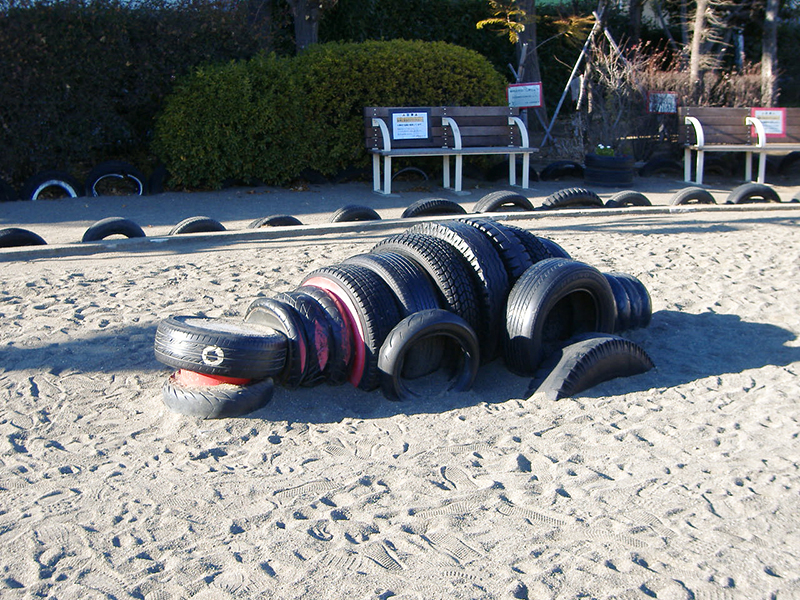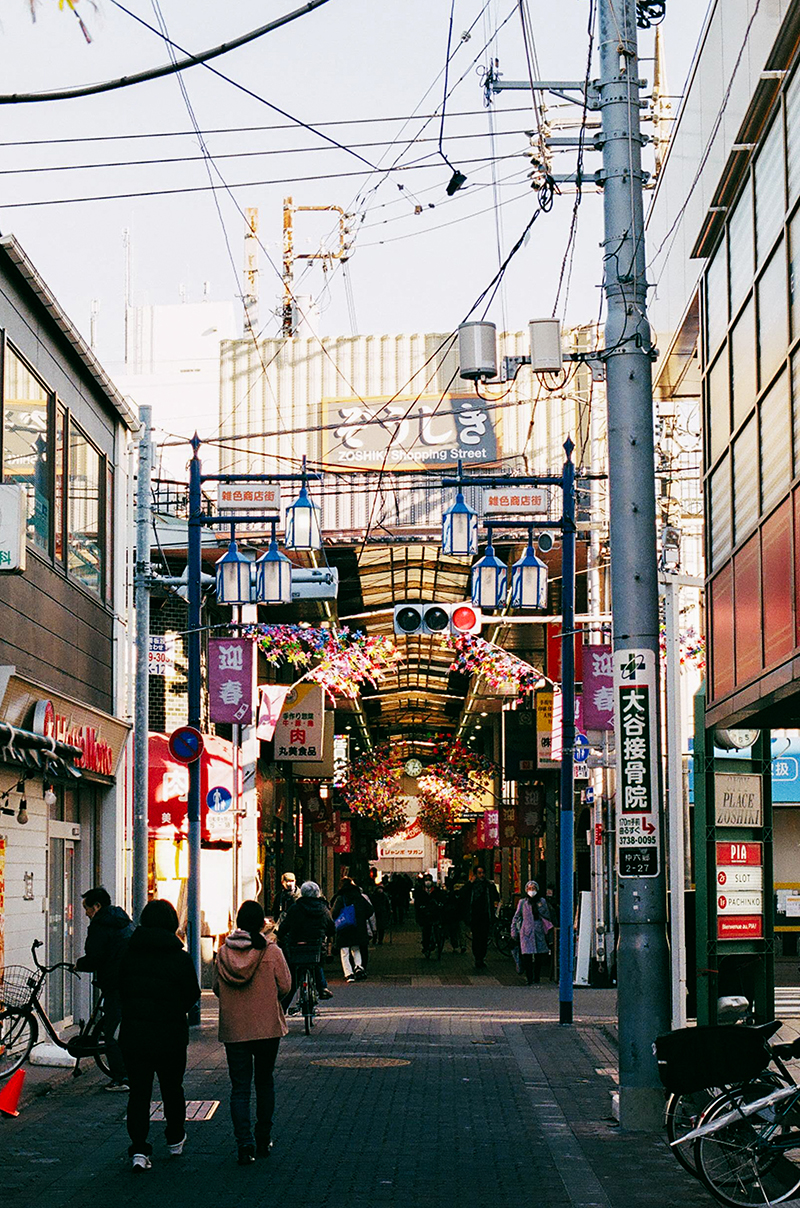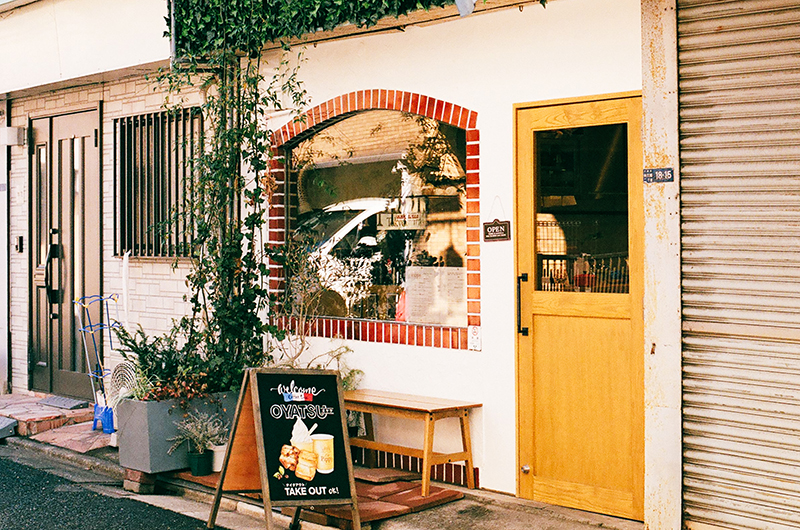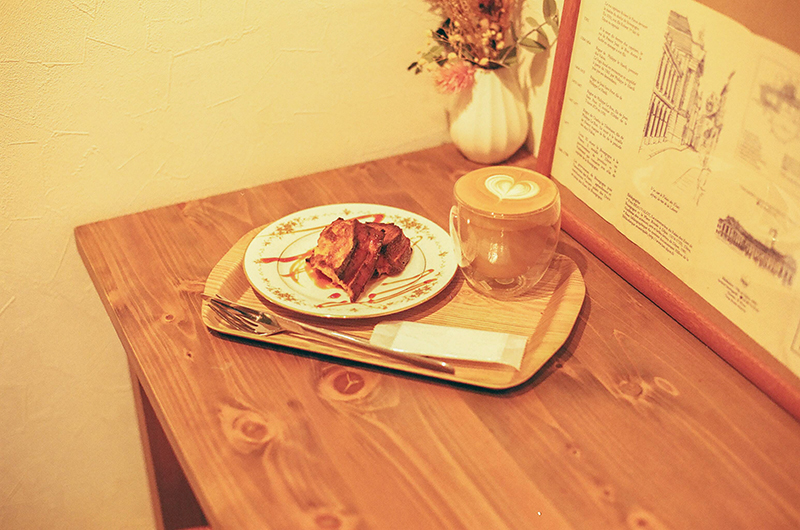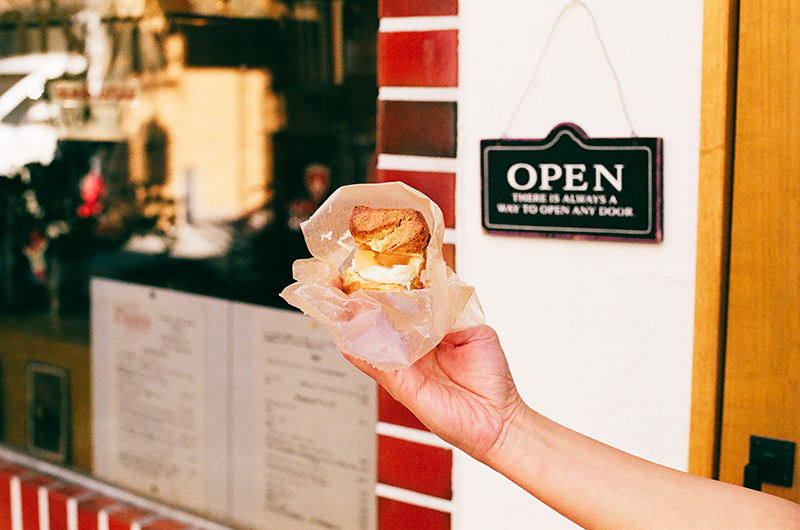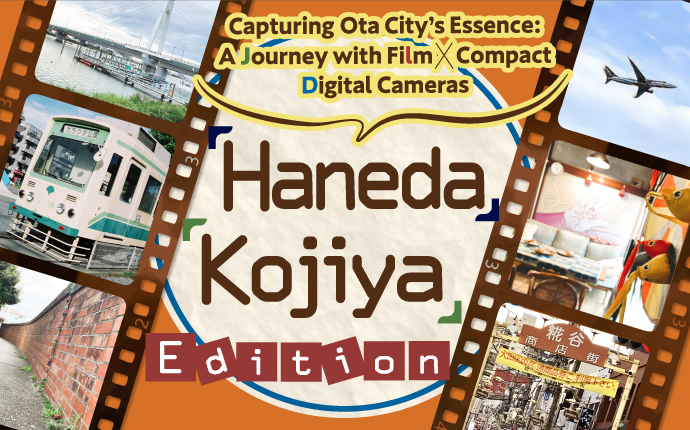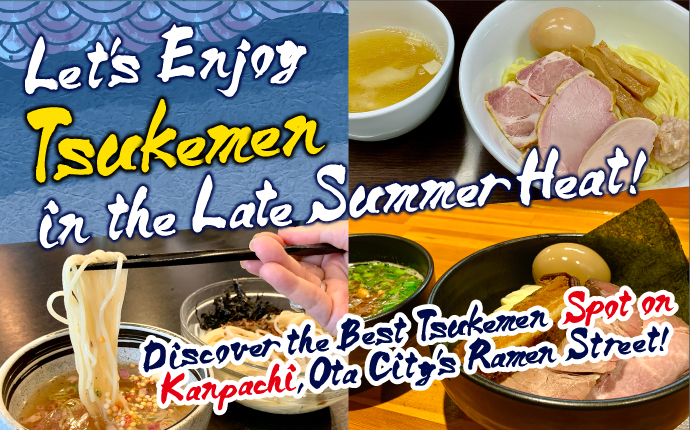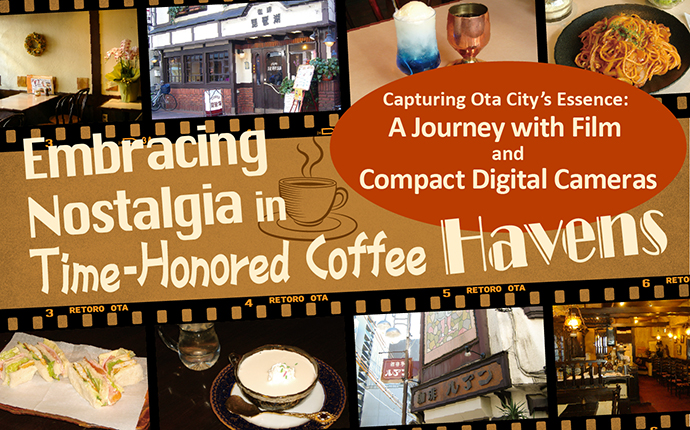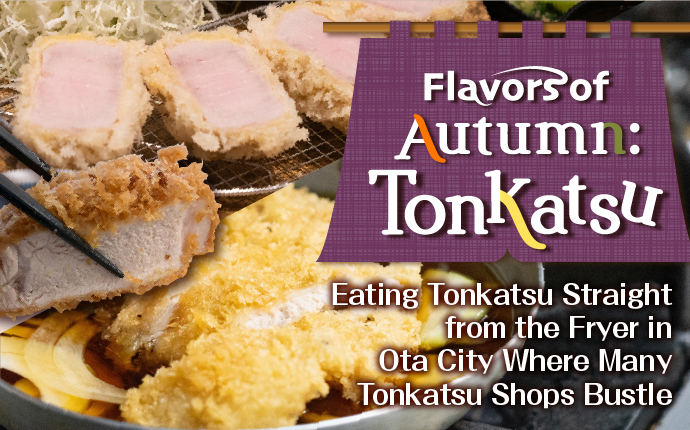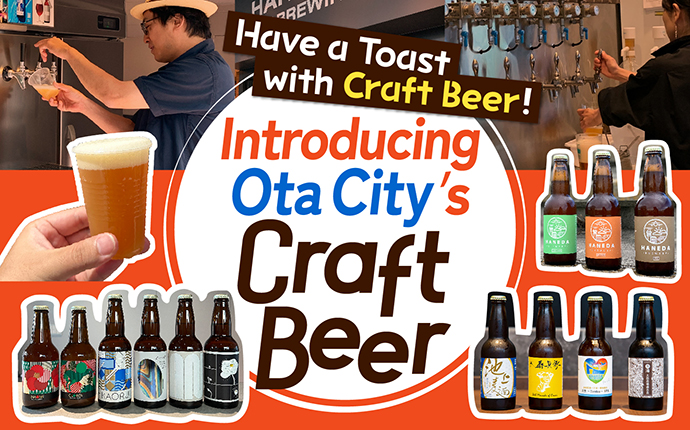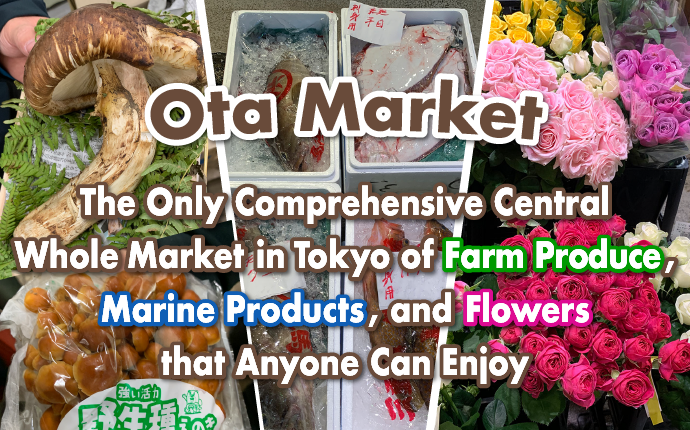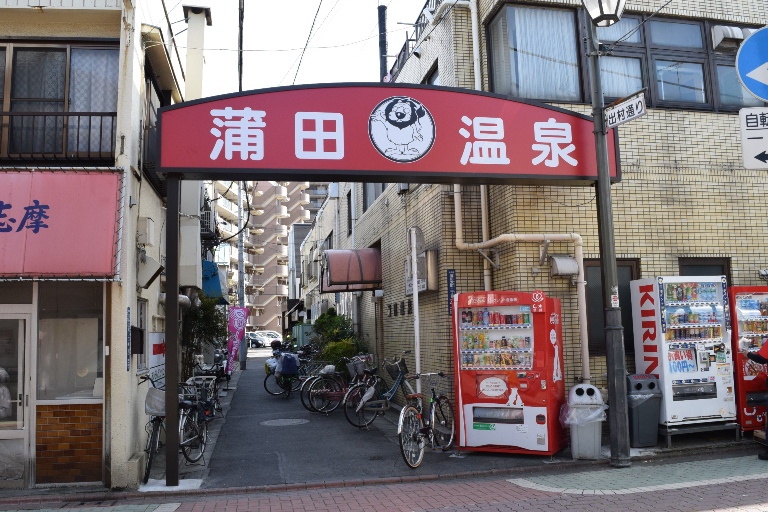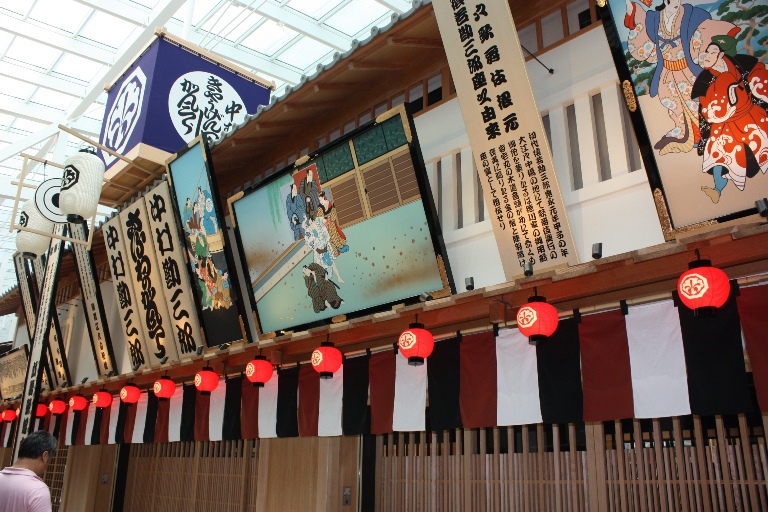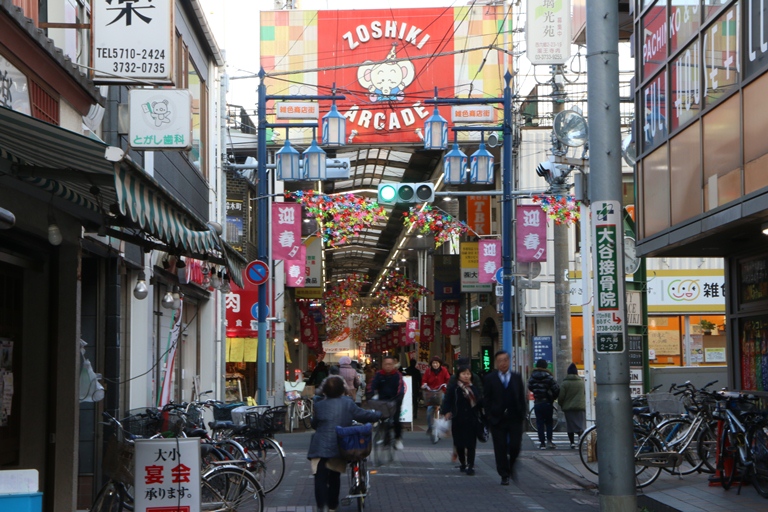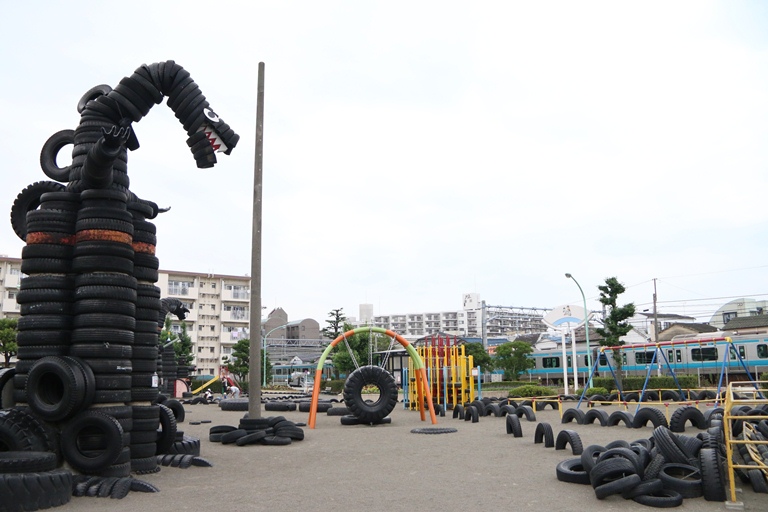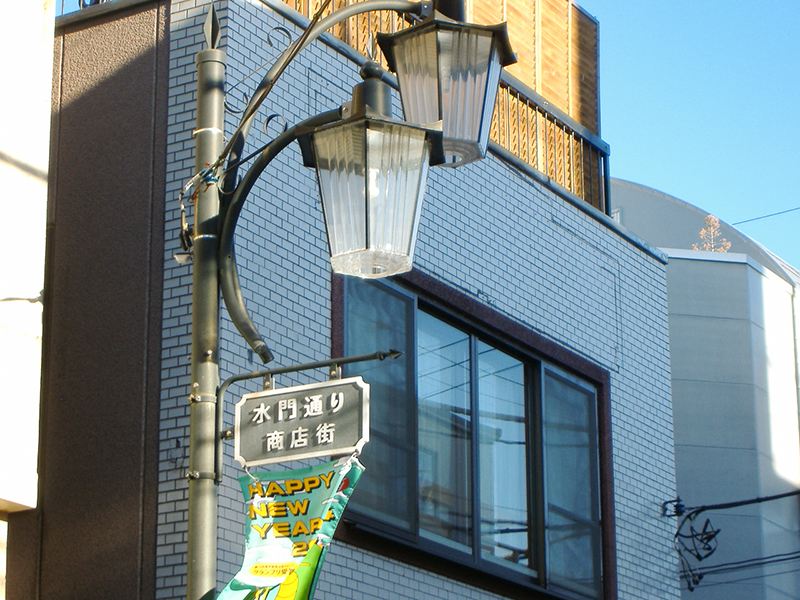 Shopping district leading to Rokugo Suimon, situated near the mouth of the Tama River.
Shopping district leading to Rokugo Suimon, situated near the mouth of the Tama River.
Continuing past Zoshiki Station, we entered the Suimon Street shopping district. This district clinched the Tokyo Metropolitan Government’s Tokyo Shopping District Grand Prix in 2023, thanks to its bi-monthly community market fair “G-round: Circles and Connection Drawn by the Community.” The street boasts a comfortable width for strolling, dotted with a few long-standing establishments.
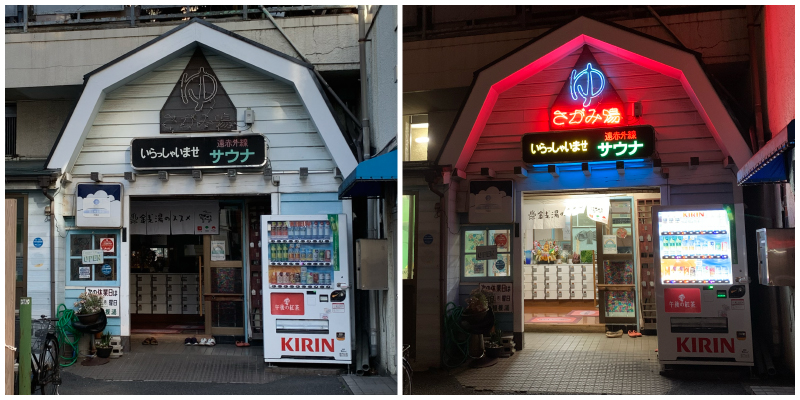 Daigo Sagami-yu ❺ dazzles with neon lights after dusk.
Daigo Sagami-yu ❺ dazzles with neon lights after dusk.
Venturing through the park adjacent to the shopping district, we soon arrived at Rokugo Suimon (sluice)
❻. Developed during the Edo period, the Rokugo Waterway served as an agricultural channel. However, frequent overflow and flooding from the Tama River prompted the construction of Rokugo Suimon as a countermeasure.
 (Left photo) The red brick shed on the right houses the Rokugo drainage pump station. (Right photo) *Captured with a film camera. The parapet of the sluice gate embankment is adorned with the former Rokugo Town emblem.
(Left photo) The red brick shed on the right houses the Rokugo drainage pump station. (Right photo) *Captured with a film camera. The parapet of the sluice gate embankment is adorned with the former Rokugo Town emblem.
During the Showa period, as the land transitioned to residential use, drainage canals often overflowed during heavy rains. Until the establishment of a sewerage system, Rokugo Suimon, along with the Rokugo drainage pump station, played a crucial role in drainage. Today, Rokugo Suimon remains an indispensable part of local life.
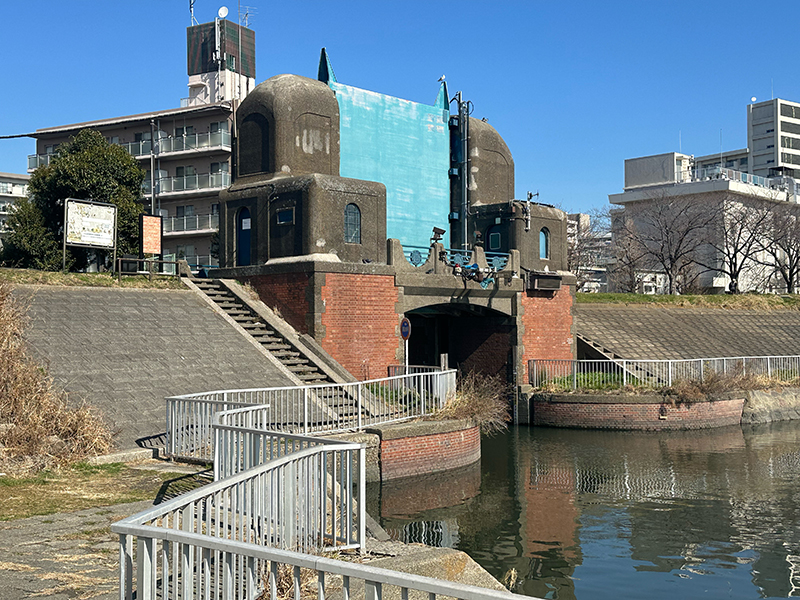 Rokugo Suimon, completed in 1931.
Rokugo Suimon, completed in 1931.
Distinguished by its German Expressionist-inspired design, Rokugo Suimon holds the distinction of being the only sluice in Japan recognized as a Japan Society of Civil Engineers (JSCE) recommended Civil Engineering Heritage Site. It has also served as the backdrop for an animated TV series. Visitors often marvel at the realization that the picturesque sluice depicted in the anime truly exists.
Continuing our journey, we strolled along the tranquil banks of the Tama River.
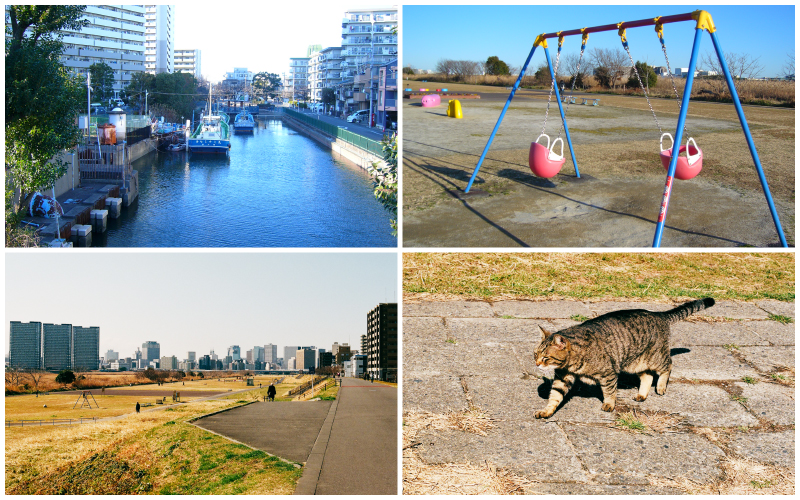 A cycling road runs here, so watch out for bicycles. *Bottom photo captured with a film camera.
A cycling road runs here, so watch out for bicycles. *Bottom photo captured with a film camera.
Soon, the Rokugo Bridge (Shin-Rokugo Bridge) came into view, renowned for spanning the route of the Hakone Ekiden marathon. Historically, the Rokugo-ohashi Bridge was a pivotal point on the Tokaido road, originally constructed by Ieyasu Tokugawa over the Tama River in this vicinity. However, due to frequent washouts, the bridge wasn’t rebuilt after 1688. Instead, ferry boats, known as Rokugo no Watashi, facilitated people’s travel.
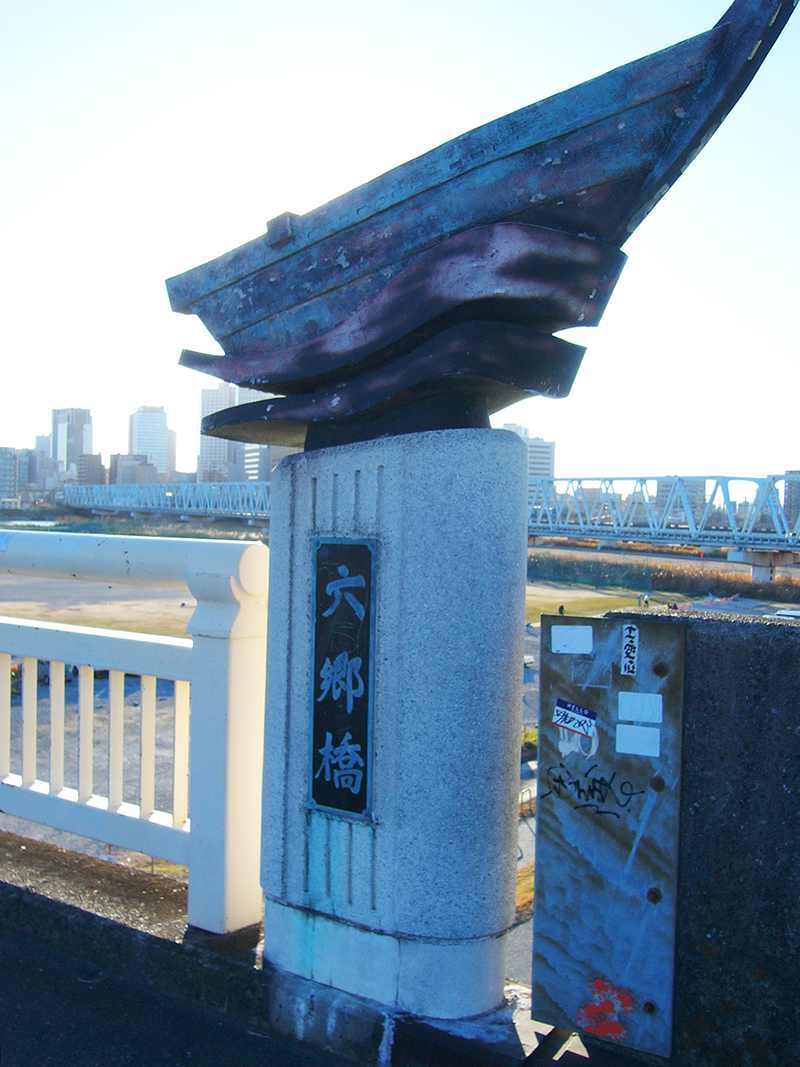 A ferry boat monument ❼ adorns the parapet of the Rokugo Bridge.
A ferry boat monument ❼ adorns the parapet of the Rokugo Bridge.
In the Taisho period, the concrete, tied-arch Rokugo Bridge was finally completed. With increased traffic demands, the bridge was replaced with the current Rokugo Bridge in 1987. Nevertheless, remnants of the old bridge, including the parapet and main pillar, found a new home at Miyamotodai Ryokuchi
❽, located at the bridge’s base.
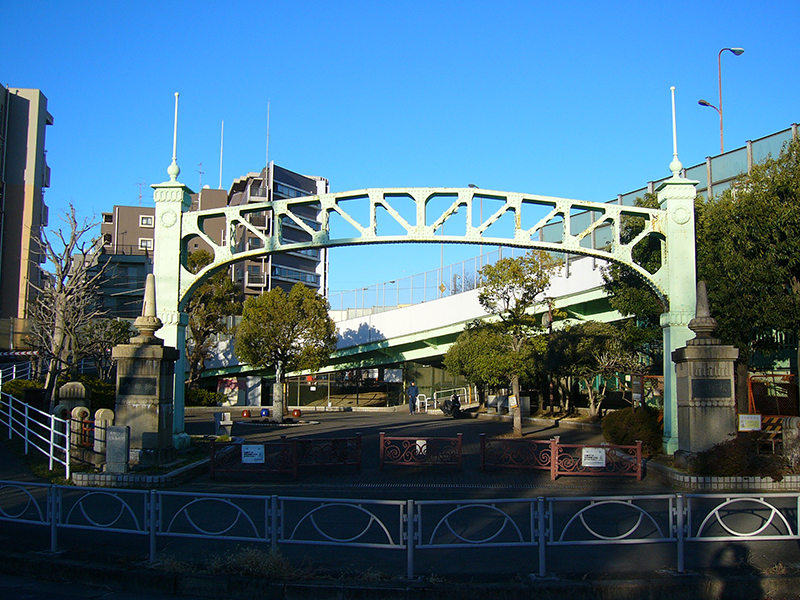 Remnants of the old Rokugo Bridge preserved in Miyamotodai Ryokuchi.
Remnants of the old Rokugo Bridge preserved in Miyamotodai Ryokuchi.
With some time to spare before sunset, let’s venture a little further upstream.
 A popular spot for railroad enthusiasts, where the JR and Keikyu Main Lines run parallel. *Captured with a film camera.
A popular spot for railroad enthusiasts, where the JR and Keikyu Main Lines run parallel. *Captured with a film camera.
Ahead lies Tamagawa Ryokuchi Park
❾, affectionately known as Violin Park.
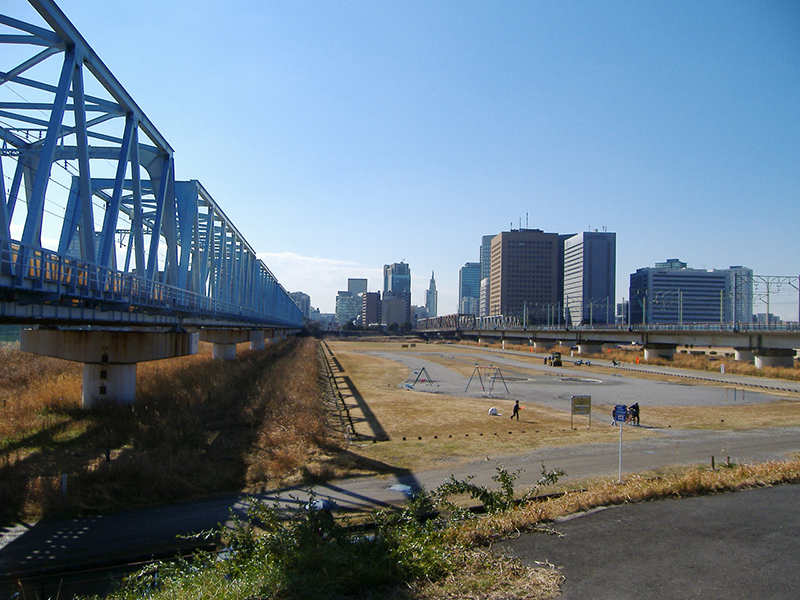 The sand design resembles a violin.
The sand design resembles a violin.
Returning to the riverbank here, residents of Ota City should seize the opportunity to explore this hidden gem, often overlooked due to its proximity to Kanagawa Prefecture.
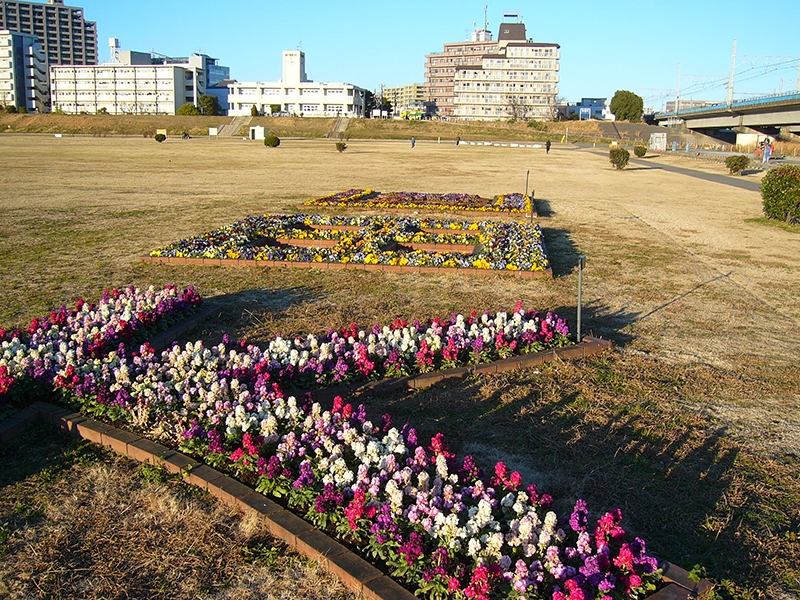 Letters of Ota City and the city emblem visible from the windows of Keihin Tohoku Line trains.
Letters of Ota City and the city emblem visible from the windows of Keihin Tohoku Line trains.
Near the Tamagawa Daini Baseball Field, you'll encounter a flowerbed
❿ shaped like the letters “Ota City”! Don't miss the chance to admire it while you’re here. Now, let’s await the stunning sunset.
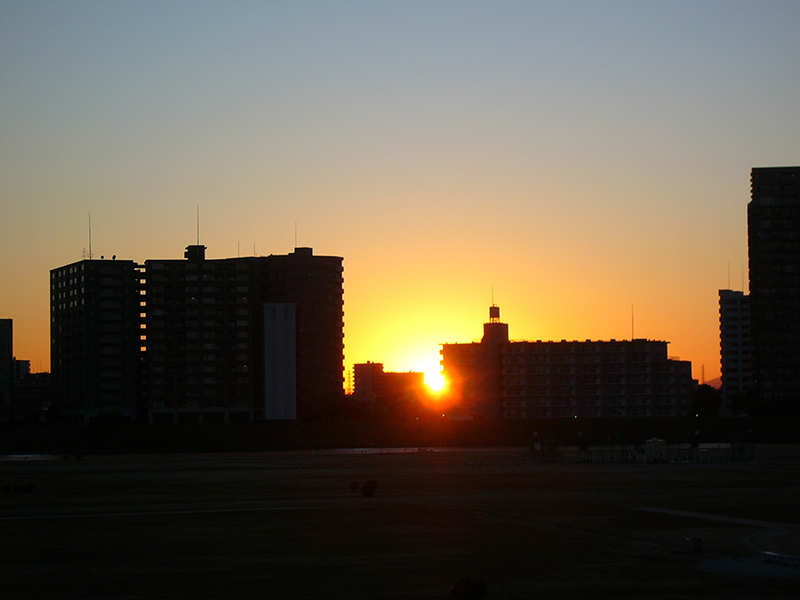 The sun begins to set over the buildings in Kawasaki ⓫, as children hurry home.
The sun begins to set over the buildings in Kawasaki ⓫, as children hurry home.
If you continue upstream, you might catch a glimpse of Mt. Fuji reflected in the sunset, though it’s quite distant from Rokugodote Station. That concludes our journey for today. If time permits, consider exploring the collaboration with Mt. Fuji on another occasion.
Capturing the film-like aesthetic even with a smartphone!
With the aid of smartphone applications designed for editing in a film style, you can achieve the nostalgic look reminiscent of film photography without the need for a traditional camera. Explore various post-processing options to find your preferred style and enhance your photos. A key tip for imbuing your images with atmosphere is to slightly intensify the grain (rough noise). This simple adjustment can significantly enhance the overall ambiance of your photos.
 The left photo depicts the image pre-processing, while the right photo showcases the post-processed version.
The left photo depicts the image pre-processing, while the right photo showcases the post-processed version.
We hope you enjoyed this special feature—a leisurely stroll through the rich tapestry of Ota City’s past and present.
There are many more attractive places in Ota City. Try finding your own place that you can recommend Ota City for. If you find your favorite, please make sure to post on SNS. Don’t forget to use the hashtag #uniqueota!
Ota City promotion website
“Unique Ota” delivers information about the appeal of Ota City with the keywords “a town where you can encounter unique locations unlike anywhere else, which can only be found in Ota City.”
We encourage you to dig deep to find the contents you are interested in. Check back soon for the next edition!
